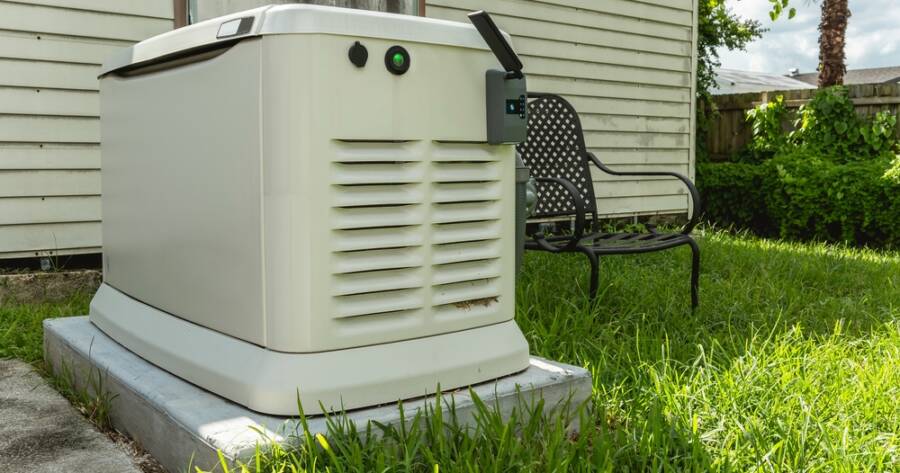Amid increasing power outages, emergency generators have become essential for maintaining comfort and safety in U.S. homes. As demand rises, understanding the features and types, from diesel to solar, is crucial in choosing the right generator. Key considerations include automatic load management, noise reduction, and remote monitoring capabilities. Safety and cost-effectiveness also play significant roles in decision-making.
Understanding Emergency Generators
In the face of increasing power outages due to natural disasters and other unforeseen events, having a reliable emergency generator has become more crucial than ever. As these outages have doubled in the U.S. over the past two decades, the demand for effective backup power solutions is significant amid changing climatic conditions.
Emergency generators serve as lifelines during these events, ensuring that essential home appliances such as refrigerators, heaters, and medical devices remain operational, which is critical for safety and comfort or emergencies.
Key Features To Look For
When selecting an emergency generator, several key features should be considered to ensure it meets your specific needs. First, automatic load management systems are crucial. This technology allows the generator to adjust its power output based on real-time demand, preventing overloads and optimizing performance. This not only extends the generator’s lifespan but also enhances fuel efficiency, meaning less frequent refueling is required.
Noise reduction is another essential feature. Thanks to advancements in engine design and sound insulation, modern generators operate more quietly, minimizing disruptions, especially in areas with strict noise regulations as in residential neighborhoods. Moreover, fuel efficiency improvements, such as electronic fuel injection and variable engine speeds, contribute to better resource management during outages.
Remote monitoring capabilities via smartphone apps are becoming increasingly popular, offering convenience and control. These systems allow users to monitor and manage their generators remotely, providing alerts related to maintenance needs or fuel levels or even starting the generator remotely.
Types of Emergency Generators
Emergency generators can be categorized into several types based on their fuel and engine configurations. Diesel-fueled compression ignition engines are prized for their reliability and efficiency, especially in commercial settings. In contrast, spark ignition engines powered by natural gas are favored for their affordability and lower emissions, presenting a more environmentally friendly option.
Portable and inverter generators are also widely used, offering flexibility for different applications. Portable generators are ideal for temporary setups, while inverter generators are known for their clean power output suitable for sensitive electronics. Solar generators are emerging as a sustainable alternative; however, they are currently limited in capacity and market availability due to technological constraints.
Safety and Maintenance Considerations
Safety is paramount when using emergency generators. It’s critical to operate generators outside and at least 20 feet from the home, ensuring exhaust is directed away from residences to prevent carbon monoxide poisoning. Built-in sensors for automatic CO shutoff can significantly reduce the risk of such hazards during use.
Regular maintenance is vital for the longevity and efficiency of generators. Gasoline and diesel models require frequent servicing, including oil changes and filter replacements, to operate effectively. Ensuring compliance with local regulations and permits is also essential, as these dictate the safe use and environmental standards for generators.
Budget and Cost-Effectiveness
Budgeting for an emergency generator involves weighing initial costs against long-term benefits and operational costs. Portable generators are typically more affordable upfront but may involve higher fuel costs and maintenance over time. Standby generators require a higher initial investment but provide convenience with automatic start features and connection to home circuits using a transfer switch. It’s important to evaluate features against cost and check for warranties and post-sale support provided by the manufacturer.
Cost-benefit analysis can help decision-makers avoid overpaying for unnecessary features while ensuring essential functions are covered. Noteworthy models balance power output, fuel efficiency, and durability to address individual needs while accommodating varying household sizes, environments, and power demands.
Why You Should Learn More About Emergency Generators Today
With the increasing frequency of power outages, understanding the key features and types of emergency generators can aid in selecting a unit that best matches specific household needs. Factors like fuel efficiency, noise reduction, and safety features can heavily influence the performance and suitability of a generator.
Furthermore, embracing new technology such as remote monitoring and environmentally friendly fuel options can offer peace of mind, ensuring reliable power during emergencies. As the market continues to evolve, staying informed about emerging trends and innovations in generator technology is crucial for making savvy purchasing decisions.
